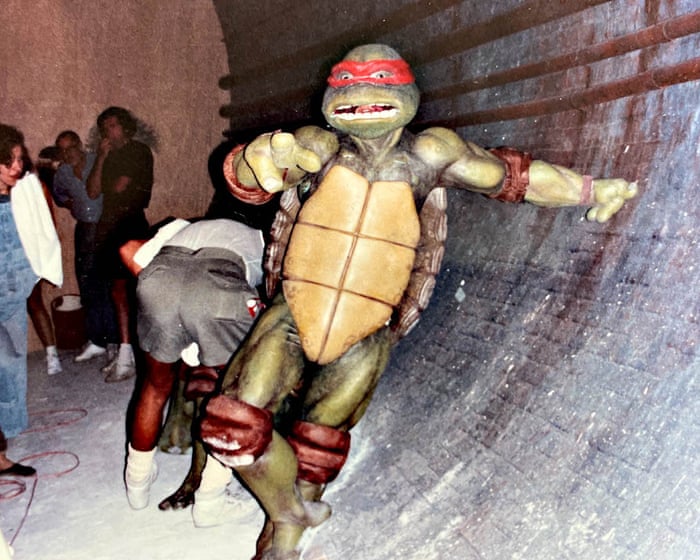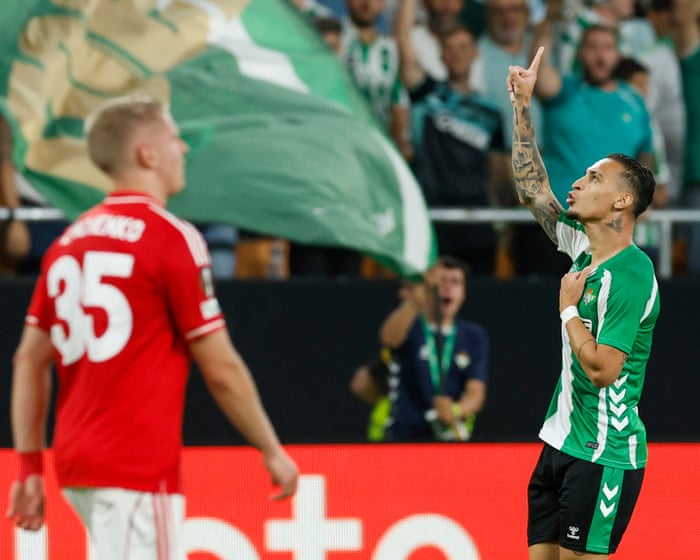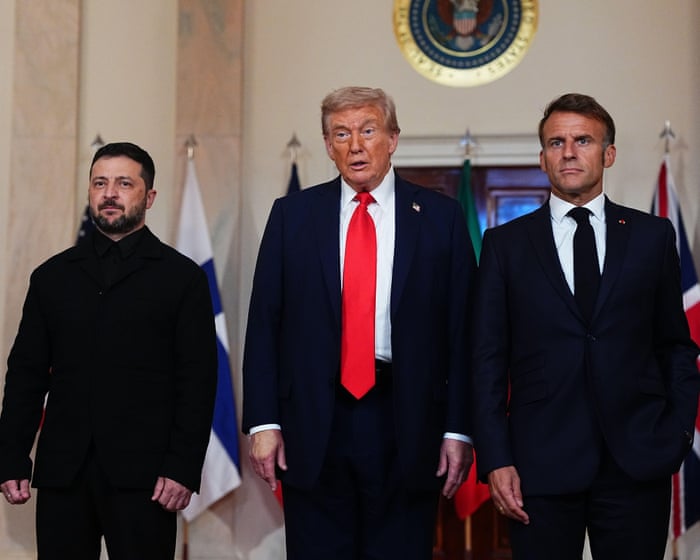Steve Barron (director): Golden Harvest, the Hong Kong production company, wasn’t sure whether to use creature suits or hand-drawn animation like in Who Framed Roger Rabbit. The cartoon series was gaining popularity, so they considered bringing the animated characters into a live-action film. But I disagreed—I felt it needed to feel real and gritty, set in moody sewers. The cartoon didn’t give me a cinematic vibe, but the comic book did.
Josh Pais (Raphael): They flew us to London to get full-body casts made. I was in a back room at Jim Henson’s Creature Shop with my arms stretched out and suspended by ropes. They covered my body in plaster, starting with my back, then my front, neck, and face. They put straws in my nose so I could breathe. As the plaster set, it got warm, and everything heated up. I couldn’t hear well, and things started to feel intense, so I turned inward. Later, they told me they kept me in longer than necessary to see if I’d panic.
Leif Tilden (Donatello): I had no idea how much work went into creating these creatures. It was like NASA for puppetry. Falkor’s head from The NeverEnding Story was lying in a corner, and characters from The Dark Crystal and Labyrinth hung from the ceiling. I felt like I’d fallen down the rabbit hole.
David Forman (Leonardo): I had experience with animal suits—if you needed a bear or gorilla, you’d come to me. But a talking character was a new challenge. The suits were designed with creases and stretchable joints so we could kick, punch, and move with full dexterity. They were built in stages: chest, legs, feet, and hand pieces, all connected with elbow and knee supports.
Steve Barron: Jim Henson was concerned about the weapons and fight scenes. It took some convincing, but he eventually trusted me. I told him I’d keep the spirit warm and tender, and the tone would be something he’d be proud of. Luckily, he agreed. I don’t think the film could have been made without him.
Michelan Sisti (Michelangelo): I happened to be at the Creature Shop when Dave tested the full suit for the first time. He was rolling around and moving in all sorts of ways. After about 30 minutes, I asked him how it was, and he said, “Not good,” even though he was in great shape. He knew the pain that was coming.
David Forman: I was used to heavy suits—sweating, working blind, knowing my markers for movement. But the weight was tough because of all the batteries in the shell to power the servos in the head. A lot of pressure was on our hips and lower backs. We spent most of the time on all fours, looking like turtles, but in pain.
Leif Tilden: The suits were sculpted precisely to our bodies, so even the smallest movement showed. We also had to learn how to cope with the extreme temperatures inside.
Steve Barron: They knew the suits would be heavy and hot, but they didn’t realize just how bad it would be until we started shooting in North Carolina. The heat was intense. Poor Josh was the only one without prior experience in performance costumes, and he struggled. It triggered some claustrophobia for him.
Josh Pais: It felt like your blood was boiling. Sometimes one of us would snap and yell, “Take the head off! Take the head off!” The heads were glued on, so removing them wasn’t quick—they had to undo the glue. If one person panicked, it often spread to others like a fever. The producers weren’t happy because it slowed everything down.
David Forman: There was very little oxygen in the head, so between takes, they’d point blowers into our open mouths to help us breathe.
Michelan Sisti: I was the experimental turtle.Everyone was overheating, so they tried using cooling vests originally designed for astronauts. I had one that circulated liquid. They had me put it on and work up a sweat. When they turned on the pump, I immediately got a full-body cramp and collapsed. The pump had a warning that said, “Do not put ice in,” but someone had put ice in it. The sudden temperature change to my overheated core almost killed me.
They set up a room enclosed in plastic sheeting with air conditioners inside. We had to sit on benches with our arms raised and heads down.
We built a wooden horse for them to sit on so they could drape their arms over it. There was a fan in the middle that blew air through the mouth. Seeing all four of them on it looked like a Damien Hirst sculpture.
The first time all four of us were together for the opening “Cowabunga” sewer scene, it was a jungle of challenges. The art director created a sewer set that was incredibly realistic—moist and very slippery.
We were struggling. There was water running under our feet, and we were all having vision problems. If one of us stopped, we’d crash into each other. It was a relatively simple 45-second sequence, but it took at least 12 hours to film because everything kept going wrong.
The sewers were treacherous. Every time we jumped around a corner, one of us would slip and fall. Eventually, someone suggested taking the bottoms off our legs and wearing sneakers instead. If you slow down the video when Dave enters the frame, you can see his legs as he jumps down.
It would have been a lot easier if there were only two turtles, that’s for sure.
The turtle faces were radio-controlled by puppeteers nearby. In North Carolina, sometimes a plane would land a mile away right in the middle of a take, and suddenly the turtles’ faces would twitch and go crazy.
The campfire scene where they connect with Splinter is a big moment. Michelangelo is crying, and it’s clear how much they care for their father. There were a few underlying themes, but the strongest was family.
We were stoned out of our minds. I smoked half a joint before we did it.
Leif pulled out a blunt, and we were like, “Yeah, come on!” We’d all been through so much. It gives me chills thinking about it. It was a spiritual experience, and the buzz made it even deeper.
That was a wonderful sequence—connecting with our father, Splinter, and the whole atmosphere of that scene.
The fans are so grateful that we’ve stayed in touch. They constantly thank us for being there for them in the 1990s. Grown adults say, “You were my childhood hero.” It’s helped all sorts of people for different reasons.
People come up to me with tears in their eyes saying, “You helped me through my childhood.” A lot of them had anger issues like Raphael and say watching the movie over and over made them feel less alone. It’s an adult film for kids—it doesn’t talk down to them but challenges them to grow.
Many more people have stayed connected to the movie than I expected. Young fans have carried it with them into their 40s. Lots of people say it was the best adaptation. You take it with a grain of salt, but it’s nice to hear.
Teenage Mutant Ninja Turtles: The Movie is in US cinemas starting Thursday, August 28. Lose Your Mind: The Path to Creative Invincibility by Josh Pais is published on September 30.
Frequently Asked Questions
Of course Here is a list of FAQs about the making of the 1990 Teenage Mutant Ninja Turtles movie written in a natural conversational tone
General Beginner Questions
Q Why is the 1990 TMNT movie so special compared to the cartoons
A It took a much darker more serious and streetlevel approach to the characters staying much closer to the original blackandwhite comic books than the popular lighter cartoon series
Q Who actually played the Turtles They look so real
A They were played by actors in incredibly detailed lifesized animatronic suits Each suit was operated by a team one actor inside performing the body movements and a team of puppeteers offcamera operating the facial expressions
Q Who were the actors inside the Turtle suits
A The main performers were
Michelangelo Michelan Sisti
Donatello Leif Tilden
Raphael Josh Pais
Leonardo David Forman
Q Was Splinter also a guy in a suit
A Yes The talented puppeteer and actor Kevin Clash operated the Splinter puppet which was an intricate radiocontrolled animatronic
Advanced BehindtheScenes Questions
Q Why do people call it the NASA of puppetry
A This nickname comes from the incredible technical complexity and innovation required Jim Hensons Creature Shop built the suits which were marvels of engineering featuring over 60 points of movement each controlled by a team of puppeteers via complex cable systems It was a massive cuttingedge operation
Q What was the biggest challenge of making this movie
A The sheer physical difficulty for the performers The Turtle suits weighed between 60 and 90 pounds were incredibly hot and had very limited visibility Stunt performers could only be in them for about 30 minutes at a time
Q Is it true the Turtles faces could show real emotion




